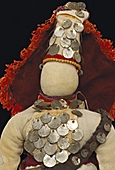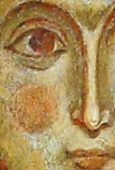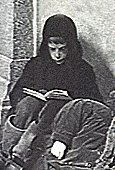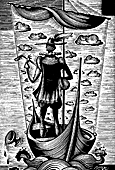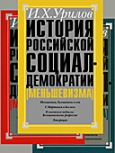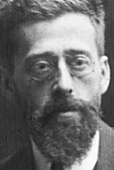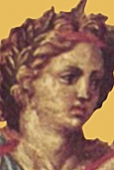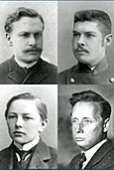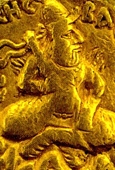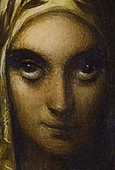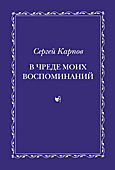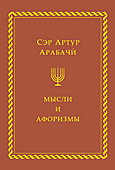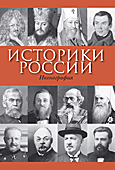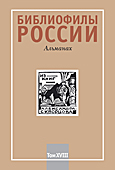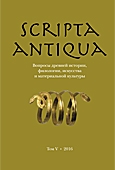Археология
К вопросу о формировании ранней земледельческой культуры в низовьях Амударьи
Болелов С.Б.
В статье, на основании археологических данных, рассматривается начальный этап становления раннеземледельческой культуры в низовьях Амударьи (Древний Хорезм) – вторая половина II тыс. до н.э. – середина I тыс. н.э. Выделяются два последовательных, но никак не связанных между собой в культурном отношении, этапа развития ирригационного земледелия на территории Южного Приаралья. На основании анализа археологических источников предлагается периодизация эпохи раннего железного века Хорезма (РЖВХ) – конец VIII – VI вв. до н.э.; определяются основные направления культурных связей области древней дельты Амударьи в различные периоды РЖВХ, а также роль и значение этих связей в процессе становления раннеземледельческой культуры Хорезма.
S.B.Bolelov (Moscow). TOWARDS
THE FORMATION OF THE EARLY AGRICULTURAL CULTURE IN LOWER AMUDARYA
The article presents the analysis of the process of formation of the agriculture in Chorezm (Southern Aral region, Lower Amudarya). According to archaeological data one can distinguish two periods of irrigational agriculture in the delta of Amudarya. The first of them dates to the period of Late Bronze (mid. II – early I mill. B.C.), when cattle-farmers of Tazabagyab Culture , which was formed on Srubno-Alakul substrate in favorable hydrographic and ecological situation in the right-bank Chorezm (Southern Akchadarya delta), develop irrigational agriculture combined with cattle-breeding. The beginning of the next step of development of the agriculture of Chorezm dates to the very end of the VIIth cent. B.C., when a group of cattle-farmers (Kara-Kuyusay Culture of the Early Iron Age) also thanks to the favorable ecological situation and established waterregime of Amudarya and watering of Sarakamysh delta of the river, pass to irrigational agriculture, which became a foundation of the palaeoeconomic system of Ancient Chorezm. The key role in this process was played by a powerful cultural impulse from the Southern ancient agricultural regions of Central Asia, first of all – from Marghiana and Bactria.
Археологические следы миграции готов в эпоху переселения народов: черняховские находки на Римском Западе
Казанский М.М.
Статья посвящена распространению вещей эпохи переселения народов, происходящих из зоны черняховской культуры на Римском Западе, которые могут маркировать присутствие готов. Такие вещи, в первую очередь легко опознаваемые предметы «женской» материальной культуры, (фибулы, гребни), лучше всего представлены в Галлии, рейнской Германии и Испании. Эти предметы рассеяны на довольно большой территории, выделяются два района особой концентрации находок – бассейн Рейна и римская Аквитания. Возможно, такая география распространения черняховских предметов связана с реальными историческими событиями – участием варваров в защите рейнской границы Империи, с одной стороны, и расселением визиготов на территории Юго-Западной Галлии в рамках союзного договора с Римом. Черняховские вещи обычно встречаются в римском культурном контексте, что указывает на далеко зашедшую интеграцию варваров в римское окружение.
M.M.Kazanski (Paris). THE ARCHAEOLOGICAL TRACES OF THE MIGRATION OF THE
GOTHS DURING THE GREAT MIGRATION PERIOD: THE ČERNJAKHOV FINDS IN THE ROMAN
WEST
The article is devoted to archaeological finds from the civilization Černjakhov (Sîntana de Mureş) in Roman West and belonging to the Great Migration period. It is above all combs and brooches, identified as traces of the Gothic presence in the West. Objects of the Černjakhov kind unearthed in Roman West focuses primarily in Gaul and Spain. Regarding the dress parts, those women are better identified, because the female costume is more “ethnographic” in traditional societies. The objects in question are widely scattered geographically and, apart from the Rhine basin and Aquitaine, do not form a significant territorial groups. We can assume that the appearance of these two groups is linked to actual historical events – the participation of the Barbarians in the defense of the Rhine limes of the Lower Empire on one hand, and the Goths installation on the lands occupied in Gaul South other. Černjakhov type objects are found in the Roman cultural context, which shows deep integration of the Goths in Roman society. Note that in some cases the “Gothic” objects are accompanied by those of Sarmatian origin (Reims, Troyes, Sacca di Goito).
Транспортные пути Самаркандских земель (по картографическим и археологическим источникам)
Сучилин А.А.
Иневаткина О.Н.
В статье на основании картографических и археологических источников предлагается реконструкция древней транспортной системы Левобережья среднего течения Зеравшана, соединявшей главные города древнего Согда Самарканд и Бухару. Исторические карты Нового времени фиксируют существование двух веток Бухарской дороги от Каттакургана до Самарканда: исчезнувшей, Прибрежной ветки, и действующей ныне Джуминской дороги. Данные археологии свидетельствуют о древнем происхождении Прибрежной ветки, начиная с середины I тыс. до н.э., как дороги государственного значения. Бухарская дорога, пересекающая территорию Пaстдаргома, а также и древняя Кешская дорога в Южный Согд, являлись одними из факторов формирования исторического ландшафта этого важного района Самаркандского Согда.
O.N.Inevatkina, A.A.Soutchilin (Moscow). SAMARKAND’S LAND TRANSPORT ROUTES (CARTOGRAPHIC
AND ARCHAEOLOGICAL SOURCES)
In this article on the basis of cartographic and archaeological sources we offer the reconstruction of an ancient transport system of the Leftbank of the Middle flow of Zeravshan, that connected the main cities of ancient Sogd – Samarkand and Bukhara. The historical maps of the New time fixed the existence of two branches of Bokhara road – one of them, coastal branch led from Kattakurgan to Samarkand. Nowadays it is lost. And the other, that is operating now – Djuma road. Archaeological data indicates the ancient origins of the coastal branch, and since the middle of the first millennium BC., this road was of State importance. Bukhara road that crosses Pastdarg’om territory, as well as an ancient Kesh road, that led to the Southern Sogd, represents the ways of the formation of the historic landscape in this important area of Samarkand’s Sogd.
История Древнего и Средневекового востока
Царская династия Мари в контексте политической истории Верхней Месопотамии XIII в. до н.э.
Александров Б.Е.
В результате публикации текстов из Табету (совр. Телль-Табан) и Дур-Ашшур-кетти-лешера (совр. Телль-Бдери) стало известно о существовании царской династии, правившей страной Мари на Среднем Хабуре во второй половине II тыс. до н.э. Последние исследования Д.Шибаты показали, что истоки династии восходят к концу XIV в. до н.э., а ее первые представители носили хурритские имена. В статье предпринимается попытка вписать новые данные о царях Мари в более широкий контекст политической истории Верхней Месопотамии.
B.E.Alexandrov (Moscow). THE ROYAL DYNASTY OF MARI IN THE CONTEXT OF THE
POLITICAL HISTORY OF THE UPPER MESOPOTAMIA OF THE XIII CENTURY B.C.
The newly published texts from Ṭābetu (modern Tell Ṭāban) and Dūr-Aššur-kettī-lēšer (Tell Bdēri) on the Middle Habur river brought evidence on the dynasty of local rulers whose country bore the name of Māri. As was convincingly demonstrated by D.Shibata, the origins of the dynasty went back to the end of the XIVth century BCE. Another important fact is that its first rulers had Hurrian names. The present article seeks to examine these new data in a more wide perspective of the political developments in the XIIIth century BCE Upper Mesopotamia. One of the intriguing events of the history of that period was usurpation of the throne of Hanigalbat by a certain Shubrian (i.e. Hurrian) king who is mentioned in Akkadian letter KBo 1.20 found in the Hittite capital Hattusa/Boğazköy. As was already argued, this ruler cannot be identified with any of the kings of Hanigalbat known from other sources, i.e. with Shattuara I, his son Wasashatta and Shattuara II. The same is true for the unnamed king of Hanigalbat who sent his Hittite overlord a self-justification letter known as IBoT 1.34: the information which the author provides of himself does not match with the data on Shattuara I, Wasashatta and Shattuara II. Meanwhile, the contents of KBo 1.20 and IBoT 1.34 are mutually compatible and can be seen as presentation of one and the same situation viewed through the eyes of its different participants. This leads to an assumption that the main protagonists of two texts, i.e. Shubrian king and unnamed king of Hanigalbat, could be one and the same person not identical with any of the three other rulers of Hanigalbat. The political activity of this person could have fallen within the last years of Adad-nērārī I and the very beginning of Shalmaneser I’s rule. Of course, the lack of relevant sources doesn’t permit to establish the identity of this mysterious ruler. One is only left with highly hypothetical assumptions one of which was to equate the Shubrian king with […]-Sharruma, a king / or a man of Shubri who sent gifts to Assur according to the administrative text Assur.2001.D-2279. With the new data on the history of Middle Assyrian Māri on Habur it becomes tempting to take into consideration her early kings as well, especially Zumiya and Adad-bēl-gabbe I. The reasons which allow comparison of the said Māri rulers with the king of Hanigalbat of KBo 1.20 & IBoT 1.34 are geographical proximity of two lands, Hurrian origin and some sort of cooperation with Assyria on the both sides. The chronological context of KBo 1.20 & IBoT 1.34 fits the approximate dates of Zumiya and especially that of Adad-bēl-gabbe I. Needless to say, every scenario which means Māri kings’ active engagement in the international politics outside their home region will remain highly speculative: the Habur archives still lack explicit information in this regard. We must wait for new material either to prove, or to dismiss once and for all a possibility of equating the enigmatic king of Hanigalbat with some of the Māri dynasts.
Сказка об Апопи и Секененра: проблема завершения и интерпретации сюжета
Немировский А.А.
На основании анализа многочисленных фольклорных паралллелей к новоегипетской Сказке об Апопи и Секененра и ее сохранившегося начала автор приходит к следующим выводам: независимо от участи реального Секененра (который едва ли погиб в бою с гиксосами Авариса), сюжет Сказки не был связан с фиванско-гиксосскими войнами и должен был включать мирное разрешение взаимодействия Апопи и Секененра благодаря хитроумному ответу фиванской стороны (подобному ответам Эзопа и Ахикара в аналогичных фольклорных сюжетах); этот ответ должен был, по-видимому, предложить некий социально «умаленный» персонаж при некоем участии Амона-Ра.
A.A.Nemirovsky (Moscow). TALE OF
APOPHIS AND SEQENENRE: THE PROBLEM OF PLOT ENDING AND INTERPRETATION
Late New Kingdom Tale about Apophis and Seqenenre in spite of several new special treatments (e.g., the works by A.Paulet, C. Di BiaseDyson, C.Manassa, A.Banschikova and our own ones) still proposes the same main puzzles for researchers as earlier: 1) why both antagonists, the Hyksos and the Theban ones, are titled and described in the Tale as legitimate kings of Egypt (nsw), thus being presented as executing this office simultaniously; 2) Apophis is presented as “alien” and impious ruler (and the very fact of his separate Hyksos kingship in Egypt is attested as “disaster” for Egypt) and Seqenenre – as “our own” and pious one, thus occupying negative and positive poles of their opposition; why then Seqenenre is described as a weak, humble and helpless person in the face of Apophis’ challenge? Does it mean that the Tale was a kind of burlesque parody? 3) Could the lost ending of the Tale have any connotations with Theban “liberation war(s)” against Hyksos rule, and did Seqenenre conduct such a war in real history (as it is often supposed due to deadly wounds seen on his mummy)? The present paper re-studies this questions using among other data the comparison with 16 tales and legends where a powerful “alien” king deliberately challenges a weaker king who represents “our own” side with inexecutable or absurd demands: three Korean folk-tales, Indian tales of 922 *G type, Buddhist legend of a King who deported old aged citizens, Egyptian tale of Setna Khaemwaset and Sa-Osiris (Setna II), tale of Amasis and Ethiopian King (Plut. Sept. sap. 6), Arabian Nights tale of Jali’ad and Shimas, The Legend of Queen of Sheba giving riddles to Solomon (1 K. 10, 2 Ch. 9), Phoenician legend of riddling in between Solomon and Hiram of Tyre, Russian folk-tale Afanasyev 322, Persian legend in “Chatrang-namak” about origin of chess playing, Avestan and Sassanian legends of Yoishta Friyan, and especially an episode from The Aesop Romance and Aramaean Tale of Ahiqar, in both of which the mighter king complains, just as in the Tale of Apophis and Seqenenre, that he is troubled by the roar of some beasts in his far counterpartner’s city. Our conclusions are as follows. The Tale of Apophis and Seqenenre belongs to the same folktale type as stories listed above; it is a literary composition using the corresponding folkore plot, neither a parody nor some belletrized “introduction” in Theban-Hyksos wars. The combination of (1) solidarity with “our own” king as a representator of “our side” and often a positive hero and (2) the weakness and unheroic behaviour of ther same king, which is present so obviously in our Tale, is just typical for the folktale type in discussion. The ending of the story, as it is presumed by this folktale type and by recognizing Apophis as nsw in our Tale, had to be a peaceful and appeasing success of “our own” Theban side; some witty answer(s) (like those ones of Aesop and Ahiqar) had to turn Hyksos king to become more respectful to Thebans and to recognize the great powers of Re. Historical considerations make it not very probable that Seqenenre was killed in battle against Avaris rulers and not by some other enemies (Kushite, or Libyan, or local Egyptian ones, including so called “lesser Hyksos”, i.e. Asiatics ruling in some Egyptian localities; or, at last, by mutineers or conspirators), but in any case his violent death hardly could have been used or referred to in our Tale. Apophis of the Tale is more probaby Aaqenenre than Awoserre (for some reasons we think that three various prenomens combining with nomen of Apophis belong to three different kings of this nomen, as it was thought once, and not to one king who had twice changed his prenomen).
Ваджраяна и «Гухья-самаджа-тантра»
Андросов В.П.
В статье рассматриваются особенности Высшей йоги (“Anuttarayoga-tantra”) на примере «Тантры тайной общины» (“Guhya-samājatantra”), а также культурные аспекты возникновения тантрического буддизма в середине I тыс. н.э. «Культурная археология» помогает значительно глубже понять особенности духовных течений в древней и раннесредневековой Индии.
V.P.Androsov (Moscow). VAJRAYĀNA AND “GUHYA-SAMĀJA-TANTRA”
Article is devoted to features of tantras of the Highest yoga (Anuttarayoga-tantra) on example of the “Guhya-samāja-tantra” (“The Tantra of a secret community”). The studies of Western Buddhologists are worked out, as a rule, in cooperation with the Tibetan teachers, experts on traditional reproduction of Buddhist rituals, texts and practices. The author, not doubting the advantages of such an approach, raises a question whether it’s possible now to make an “excavation” of that cultural layer of the Indian civilization of the middle of the first millenium of our era when large tantrical spiritual movement has arisen in the Buddhism, Hinduism and partly Jainism. The question is also is, in what measure this method which would be possibly called “archeology of culture” is applicable for reading “Guhja-samāja-tantra”, could modern scientists understand the subject of the text, the theory and the practice, without leaning (or nearly without leaning) Tibetan legends and knowledge? The article is accompanied by the translation of the third chapter of the tantra in question from Sanskrit on Russian.
Надпись К.557/600 611 г. из Ангкор Борея (Камбоджа): перевод и комментарий
Захаров А.О.
В статье предлагается комментированный перевод на русский язык древнекхмерской надписи К.557/600 из Ангкор Борея 611 г. Надпись фиксирует религиозные пожалования различным божествам и содержит древнекхмерские личные имена и прозвища. Имена рабов, пожалованных богам, имеют санскритское, австронезийское, древнекхмерское или иное австроазиатское происхождение. Носители различных по происхождению имен выполняли одни и те же виды работ. По-видимому, происхождение имен из разных языков не было показателем различного социального статуса их носителей.
A.O.Zakharov (Moscow). INSCRIPTION K.557/600 611 CE FROM ANGKOR BOREI
(CAMBODIA): TRANSLATION AND COMMENTARY
The author offers the first complete translation of the Old Khmer inscription K.557/600 from Angkor Borei, which dates from 611 CE, into Russian. The inscription sheds light on the ancient Khmer personal names and sobriquets. Names of slaves, who were granted to various gods, i.e. religious foundations, by various donators, were of Sanskrit, Old Khmer, Austronesian, and Austroasiatic origin. But slaves, who bore these names or sobriquets, played similar social roles. Thus, slavenames of different origin were not signs of different social status.
Личность и деятельность Чингис-хана в историографии
Нестерова Е.Р.
В статье рассматриваются основные тенденции в оценке личности Чингис-хана в российской и зарубежной историографии XIX – начала XXI в.
E.R.Nesterova (Moscow). PERSONALITY
AND DEEDS OF CHINGHIS-KHAN IN HISTORIOGRAPHY
The article investigates some tendencies in the assessment of the role and significance of Genghis Khan, his conquests and the rise of his empire in Russian and foreign historiography.
История Древней Греции
Гендерный аспект поэзии и законодательства Солона
Суриков И.Е.
Поэтическое творчество Солона и его же законодательные реформы нередко рассматриваются в исследовательской литературе изолированно друг от друга, что препятствует полноценной реконструкции целостного образа этого выдающегося деятеля архаической афинской истории. В статье предпринимается попытка найти некий синтез между этими двумя сторонами его деятельности на примере гендерного вопроса. Автор, проанализировав материал как стихов, так и законов Солона, приходит к выводу, что и в тех, и в других ярко отразилась подчеркнуто маскулинная гендерная идеология.
I.E.Surikov (Moscow). THE
GENDER ASPECT OF SOLON’S POETRY AND LAW-MAKING
Solon’s poetic work and his legislative reforms are often highlighted in scholarly literature in isolation from each other, and that prevents a full-scale reconstruction of the integral image of that outstanding figure in the Archaic Athenian history. The article tries to find a kind of synthesis between the two aspects of his activities on the example of the gender question. The author, after having analyzed the data of Solon’s verses as well as his laws, makes a conclusion that in both an emphatically masculine gender ideology was explicitly reflected.
«О древних ораторах» Дионисия Галикарнасского – то же, что его утерянное сочинение «О политической философии»?
Рушкин И.П.
Принято считать, что Дионисий Галикарнасский написал несохранившийся трактат по политической философии. Это мнение основано на его же высказываниях в пространном трактате о Фукидиде. Как представляется, они относятся к другому тексту, известному как “De Antiquis Oratoribus”. Кроме того, очевидна беспочвенность рассуждений о несохранившемся произведении Дионисия.
I.P.Rushkin (Cambridge, Mass.). «DE ANTIQUIS ORATORIBUS» BY DIONYSIUS OF HALICARNASSUS
– IDENTICAL TO HIS «LOST TREATISE ON POLITICAL PHILOSOPHY»
It is generally believed that Dionysius of Halicarnassus wrote a treatise on political philosophy, which has not survived. The basis for this belief is a passage from the Dionysius’ extant treatise on Thucydides. Here, we make an argument that in the passage Dionysius actually means a different text, which is extant and now known as “De Antiquis Oratoribus”, the preamble to a series of his critical essays. Consequently, we demonstrate that the conjecture about a lost treatise is baseless.
История Северного Причерноморья
Древние способы изготовления изделий с рельефными изображениями
Минасян Р.С.
В статье говорится о древних способах изготовления рельефных изображений на пластинчатых предметах и о формообразовании полых предметов с помощью матриц методами холодной обработки металлов.
R.S.Minasyan (St.-Petersburg). ANCIENT METHODS OF PRODUCTION OF THE ARTICLES WITH
EMBOSSED IMAGES
Gold, silver and bronze objects of Classical times, found in Asiativ Bosporos, now kept in the State Hermitage, were made by various means of molding and cold processing. Technics of production of ancient pieces are often described in the archaeological or arts studies, but mistakes are often made or those ways are mentioned which were never used. In most cases the mistakes are made due to misunderstanding of specific features of operations and functional purpose of the instruments, used for deformation of the sheet metal in formation of the relief images. Archaeological and arts studies show that the researchers have no fixed idea of how these objects have been done in different regions of Europe and Asia.
A small group of objects of the Bronze Age and Classical antiquity is considered in this article. The ways of their production and instruments are fixed basing on the production traces on the hollow pieces during their formation. One needs to take into consideration that the objects made in the ways as those, reviewed in the given article or in similar ways, are kept in many museums of the world.
История эллинизма
Предполагаемый поход Александра Македонского из Маргианы в Южный Согд и Мараканду
Ртвеладзе Э.В.
Статья посвящена предполагаемому пути похода Александра Македонского 328 г. до н.э. из Маргианы в Южный Согд.
E.V.Rtveladze (Tashkent). THE SUPPOSED CAMPAIGN OF ALEXANDER THE GREAT FROM
MARGHIANA TO THE SOUTHERN SOGD AND MARAKANDA
Based on the accounts of Alexander’s campaign in Margiana given by Curtius and the events that followed it the author suggests in this article the possibility of Alexander’s having marched to Southern Sogd – the region of Nikshapa – Ksenippa – Nakhshab and to the mountain districts of the western Hissar range, where the fort of Arimazes had to be situated. Additional analysis of archaeological and numismatic evidences as well as reconnaissance investigations make this suggestion highly plausible; otherwise, after taking Margiana, Alexander would have had to go back to Bactra and proceed thence north to Maracanda, which is scarcely probable.


